How the Original USFL Affected New Orleans Saints History
The 2022 USFL Championship Game is set, with the Birmingham Stallions facing off against the Philadelphia Stars next weekend in Canton, OH. It’s been a reasonably successful year for the expansion league, which has no official affiliation with the original USFL, despite carrying many of the same team names and similar logos.
The original USFL (United States Football League) was an expansion league that began play in the spring of 1983. The fledgling league was entertaining in its short three-year duration, and even provided a bit of competition for the NFL with regard to obtaining players.
Established NFL stars like future Hall of Fame DE Fred Dean, future Super Bowl MVP Doug Williams, and Pro Bowl RB Joe Cribbs were lured to the USFL with big contracts. College stars like QB Jim Kelly, QB Steve Young, DE Reggie White, running backs Herschel Walker and Mike Rozier, and OT Gary Zimmerman passed up the chance as first-round picks in the NFL for USFL riches.
Some believed that the new league could eventually force a merger, similar to what occurred with the AFL nearly two decades earlier. Unfortunately, the league quickly ran into financial difficulties. Reduction of the number of teams, franchise mergers, and talented individual players could not stave off approaching disaster.
A fateful decision by the league’s owners, led by New Jersey Generals owner Donald Trump, to move their games to the fall in direct competition with the NFL doomed them. The USFL would cease operations in 1986 after an unsuccessful lawsuit against the NFL.
The dissolving of the expansion league led to a flock of talented players and coaches who would now enter the NFL. A special expansion draft was held in 1984, with nearly every NFL franchise eventually benefiting from the dissolving of the USFL.
The history of the New Orleans Saints changed forever when the USFL folded. Tom Benson had just purchased the team in 1985, a franchise that failed to even record a winning season in their first 19 years of existence. Benson's first act was to hire Jim Finks as general manager, a future NFL Hall of Fame executive.
Finks took full advantage of the incoming talent provided by the USFL. He poached players and coaches from the defunct league, and in the process ushered in the first ‘‘Golden Era’’ of Saints football.
New Orleans benefited more from the folding of the original USFL more than any other NFL team. Here were the most influential Saints that came over from the expansion league.
JIM MORA, COACH
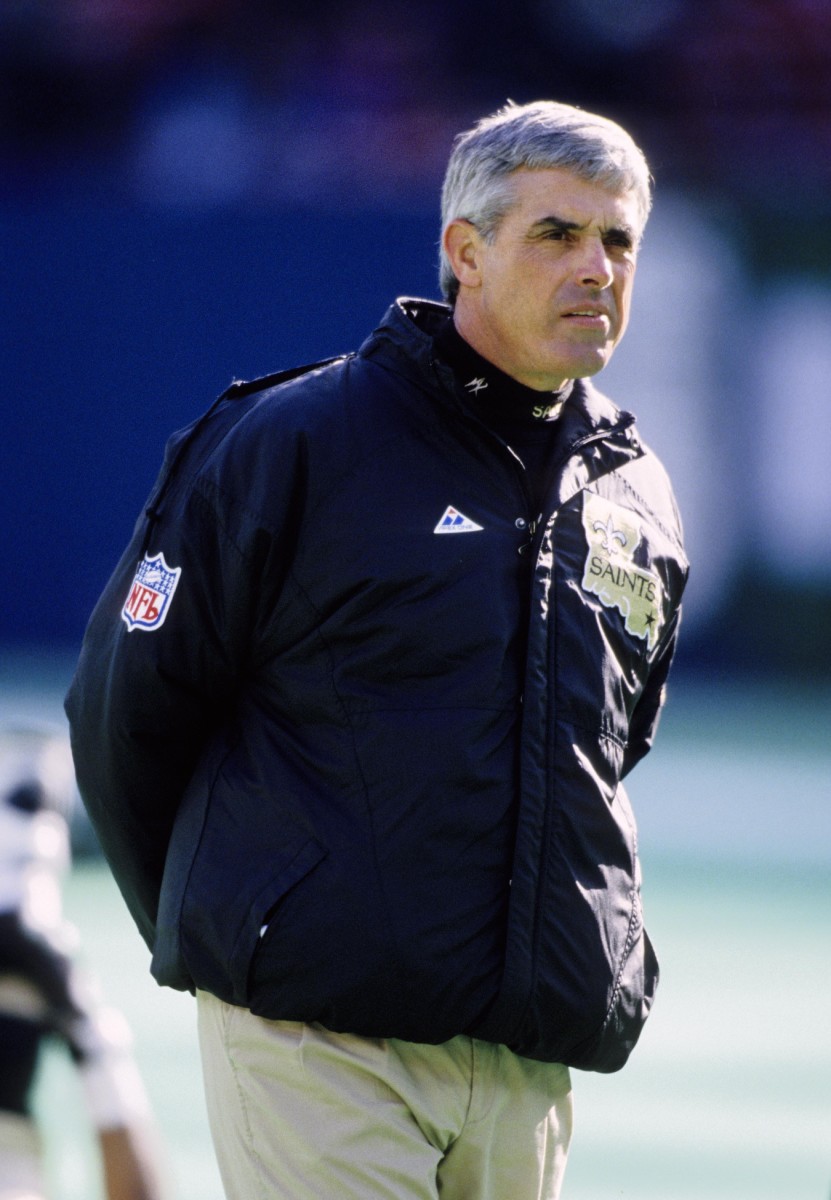
Mora coached the Philadelphia/Baltimore Stars in the USFL, where he steered his team to the Championship Game in all three years of the league and won two titles. The defensive-minded Mora almost immediately changed the culture in New Orleans, instilling discipline and a sense of confidence.
Mora completely revamped the coaching staff with several coaches from his USFL teams. That included the hiring of a young defensive backs coach named Dom Capers, who was on his Stars staff. Capers, a current assistant with the Denver Broncos, would go on to forge a 34-year career as one of the most respected defensive coaches in NFL history.
The Saints made the playoffs in Mora's second season for the first time in franchise history. He’d guide the franchise into the postseason in four of the next six years, turning New Orleans into a perennial contender. He was never able to win a playoff game, slightly tainting his legacy, but helped bring in consistent excitement over New Orleans football.
Mora left New Orleans during the 1996 season. He’d leave behind 93 wins and a .557 winning percentage, franchise records that stood until Sean Payton surpassed him in 2017. Mora was inducted into the Saints Hall of Fame in 2002.
SAM MILLS, LB
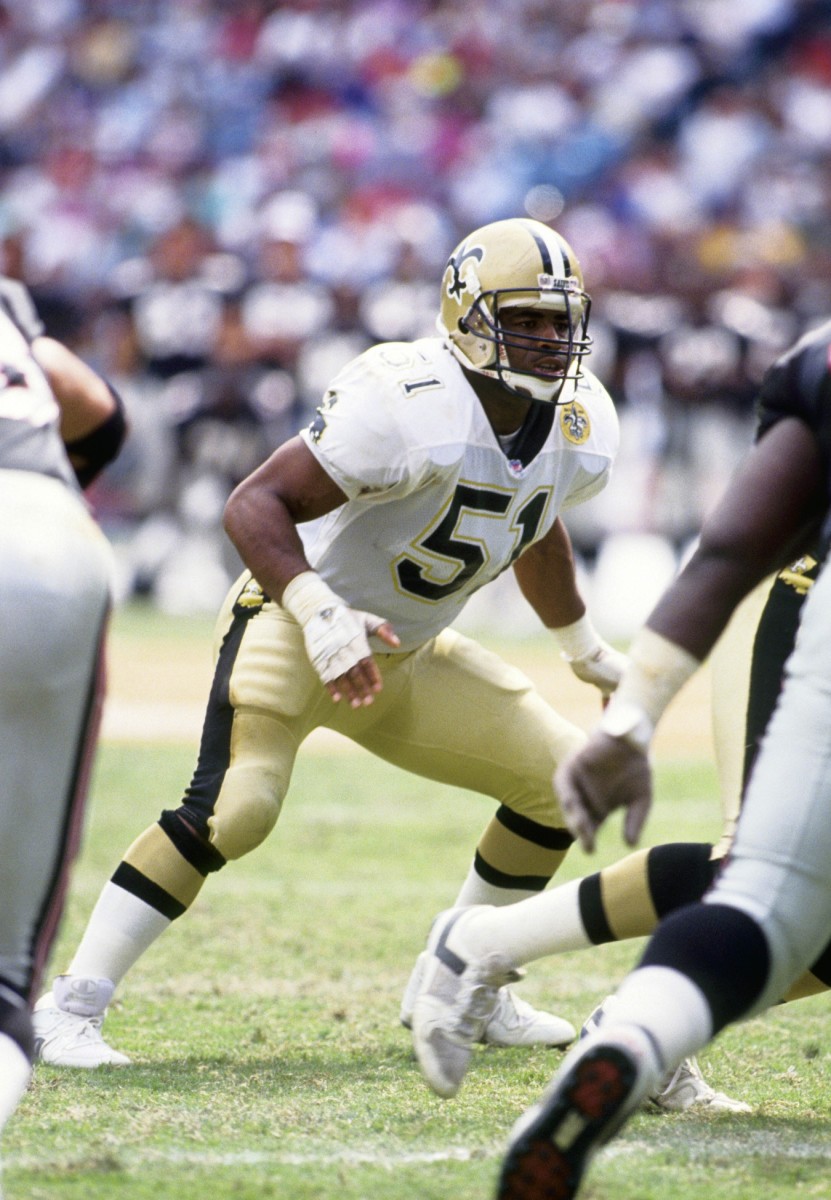
Considered ‘‘too small’’ for an NFL linebacker, the 5’9” Mills had failed tryouts with the Cleveland Browns, Toronto Argonauts of the CFL, and was even a New Jersey schoolteacher before getting a chance with Mora's Stars in the USFL. Mills was arguably the best defensive player in the USFL, other than perhaps Reggie White of the Memphis Showboats.
Mills earned All-USFL honors in all three seasons of the league's existence. Amazingly, he still wasn't selected in the NFL's expansion draft in the spring of 1984. He’d ultimately follow his USFL coach, signing a contract with New Orleans.
An immediate starter, Mills was second on the Saints in tackles his first two years, then led the team in tackles for six of his next seven seasons in New Orleans. He’d annually be among the NFL leaders in tackles and was one of the league's most respected defenders during his career.
Mills earned four Pro Bowl trips during his nine years with the Saints. He recorded 894 solo tackles during his New Orleans career, second in franchise history to teammate and NFL Hall of Fame LB Rickey Jackson. Mills also recorded 4 interceptions, 33 fumbles forced or recovered, and 10.5 sacks as a Saint. He was voted to the NFL All-Decade Team of the 1990s
Upon leaving New Orleans after the 1994 season, Mills had three standout years with the Carolina Panthers. He is enshrined in the Hall of Fame for both franchises.
Mills, who passed away in 2005, finally received the long overdue honor of being voted into the Pro Football Hall of Fame this February. He’ll be officially enshrined in August, becoming just the fifth New Orleans player or coach to receive the honor.
VAUGHAN JOHNSON, LB
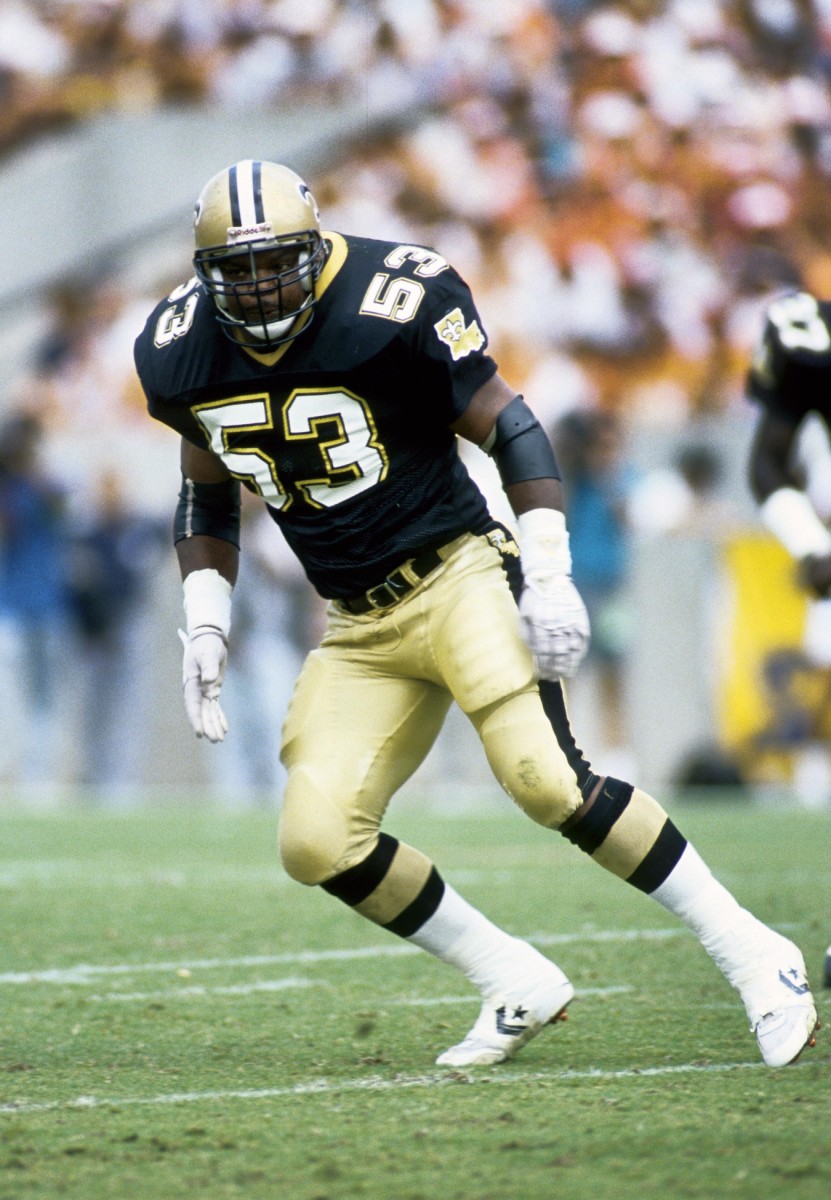
Vaughan Johnson bypassed the NFL altogether when he came out of N.C. State in 1984, signing directly with the Jacksonville Bulls of the USFL. He had 3 interceptions and 4 sacks in two standout years with the Bulls. When the league folded he joined the Saints, who still had his rights from selecting him in the first round of the 1984 Supplemental Draft.
Johnson appeared in all 16 contests in his first year with New Orleans, intercepting one pass and recording 33 tackles. Over the next seven seasons, he’d start 102 of a possible 110 games with the Saints.
Johnson earned four Pro Bowl trips over that span. He intercepted 4 passes, forced or recovered 16 fumbles, recorded 12 sacks, and notched 669 career tackles.
The most underrated member of the famed ‘‘Dome Patrol’’ linebacking corps, Johnson was a heady playmaker and ferocious hitter. He was as respected throughout the league as much as his more celebrated defensive teammates. He’d lead the Saints in tackles twice and had five seasons with at least 80 stops, including three with over 100.
Johnson left New Orleans in 1994, playing his final season with the Eagles. He’d pass away in 2019 at just 57. Johnson was inducted into the Saints Hall of Fame in 2000.
Vaughan Johnson and Sam Mills formed an elite duo at inside linebacker for eight seasons together. They joined future Hall of Famer Rickey Jackson and fearsome LB Pat Swilling, a rookie in 1986, to round out the famous Dome Patrol.
The Dome Patrol is widely recognized as the best group of linebackers in NFL history. They were the catalyst of Jim Mora's fearsome New Orleans defenses through the early 1990s that made the team a consistent postseason contender for the first time in franchise history.
BOBBY HEBERT, QB
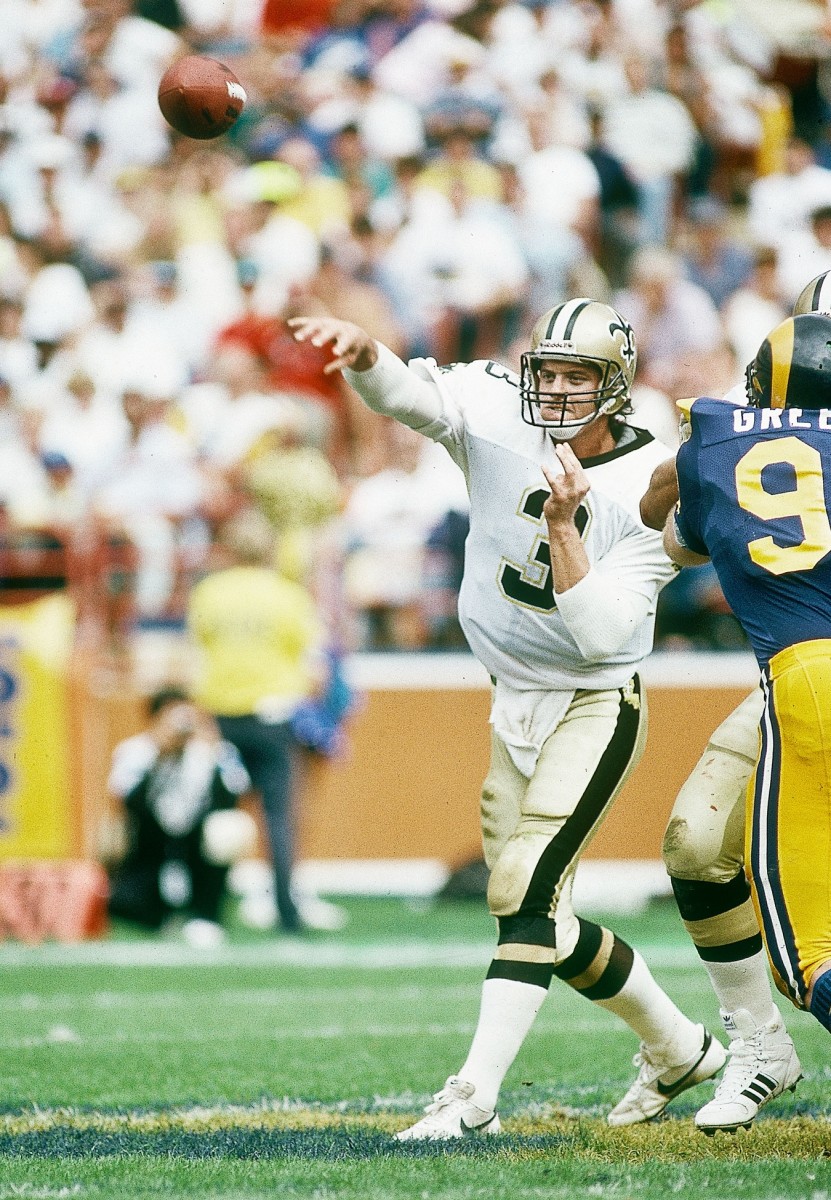
A Louisiana native and product of Northwestern State University, Hebert was voted the USFL's most outstanding player in 1983. His Michigan Panthers defeated Mora's Stars in the inaugural USFL Championship Game. The Panthers merged with the Oakland Invaders by 1985, when Hebert again led his team to the title game against the Stars.
Hebert joined New Orleans midway through the 1985 season. The Saints had gone through five starting quarterbacks since trading away Archie Manning in 1982. He’d start the last six games of the year and split time with Dave Wilson in 1986 before permanently winning the job the following season.
Hebert guided the Saints to their first ever winning season and playoff berth in 1987, going 10-2 as a starter during the strike-shortened campaign. He’d have a winning record in four of his five seasons as a full-time starter and took New Orleans into the playoffs four times.
Despite holding out of the 1990 season because of a contract dispute, Hebert is recognized by many as the franchise's second greatest quarterback behind Drew Brees. His 14,630 yards and 85 touchdowns are fourth in franchise history, with his 49 wins second in team history.
Hebert left New Orleans in 1993, playing the last four years of his career with bitter rival Atlanta. He was inducted into the Saints Hall of Fame in 1999.
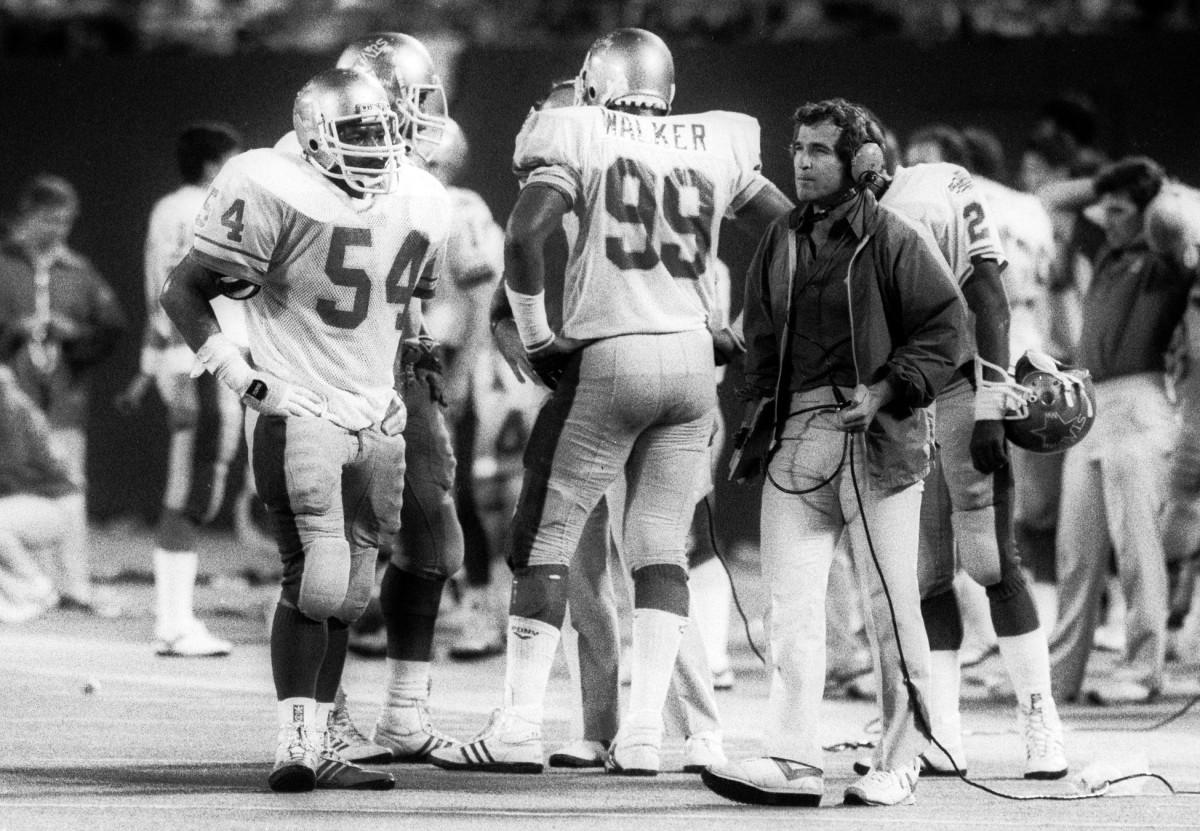
Other USFL refugees also had an impact on New Orleans football. Kick returner Mel Gray, RB Buford Jordan, QB John Fourcade, G Derek Kennard, and coaches Dom Capers and Carl Smith all had important contributions to the Saints transformation into contenders. However, it was primarily the arrival of four future franchise Hall of Famers that had the greatest influence on New Orleans Saints history.
